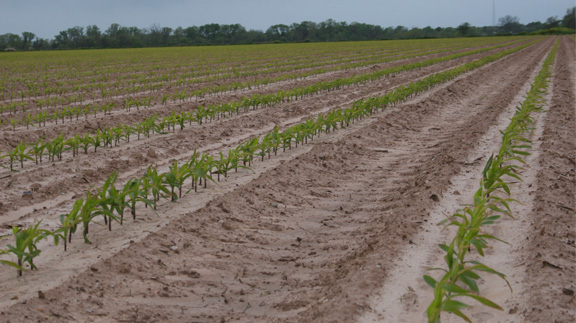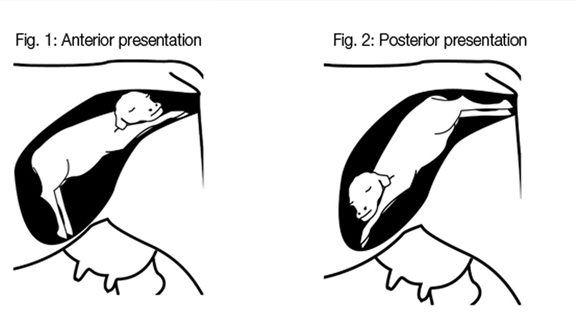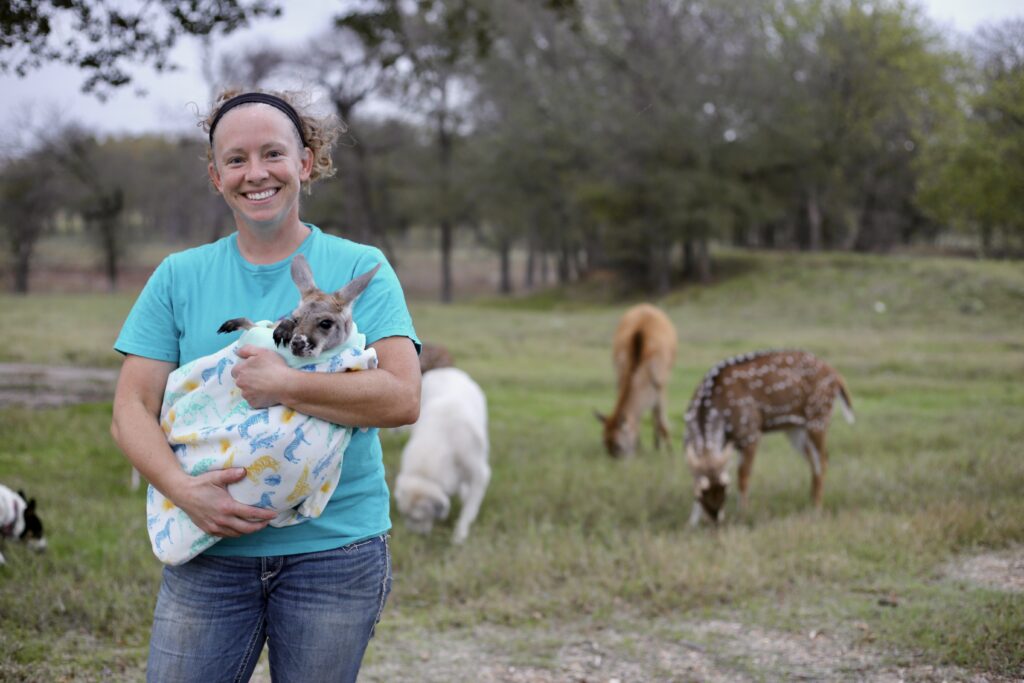Farm & Ranch
[AgriLife Today] Texas Crop and Weather Report –April 20, 2016

By: Adam Russell
Corn and sorghum appear on track in 2016
COLLEGE STATION — Corn and sorghum crops appear to be on time and on track to produce average yields for producers around the state, said Ronnie Schnell, Texas A&M AgriLife Extension Service state cropping systems specialist, College Station.
Corn acreage is a little behind the five-year average, Schnell said, but farmers and fields are in better shape than last year.
He said weather, especially wet weather, did not cause delays as it did in 2015.
“There was a lot of late planting last year due to rain,” he said. “It looks like the weather is cooperating for the most part across the state (this year).”
Corn and sorghum in East Texas, the Brazos Valley and southern Texas had all been planted with most, if not all, emerged and some were waist high or in the six-leaf stage, he said. Other producers continued to prepare fields on schedule.
Schnell said it remains to be seen how flooding over the weekend might have affected individual crops in those areas. Some prior flooding in the Brazos Valley area required farmers to replant crops.
“We could see problems in areas that received heavier rains, the 12-plus inch rainfalls, but a lot of croplands in other parts of the state, like the Panhandle, needed the precipitation as they prepare for planting,” he said.
Schnell said expectations could shift with the weather, especially if prolonged drought in dry areas or rains in wet areas occurred.
“It’s always about the timing,” he said. “But it looks like we’re off to a good start.”
AgriLife Extension district reporters compiled the following summaries:
CENTRAL: The region received 3-8 inches of rain with more rain in the forecast. Weekend storms produced excessive rainfall amounts and flooding, with county roads being closed due to overflowing creeks. Small grains have been cut for silage, but many acres were still left to cut. Pastures were in good condition, and producers fertilized heavily before the rains. Landowners would likely stay out of fields for several days to allow them to dry. Wheat and oats were laid down on the ground. Wheat crops looked good with a few instances of rust. Corn and sorghum also looked good. Tanks and all water sources were full and running over. Cattle and livestock were doing well. Temperatures were normal. All counties reported good soil moisture. Overall crop and livestock conditions were good in all counties that reported.
ROLLING PLAINS: Weather ranged from very warm and dry to cooler and wet. Parts of the region reported as much as 4.5 inches of rain and hail. There were no reports of significant damage from the hail. The moisture helped farmers who found plenty of subsoil moisture but were lacking moisture in topsoil as they prepared fields for crops. Rainfall also helped pastures and rangeland as grasses began to emerge, plus helped suppress any wildfire threat. Livestock were in good to excellent condition with plenty of grazing in pastures and winter wheat. Producers said they likely could make a wheat crop if stripe rust doesn’t become a problem. Certain wheat varieties looked really good while other varieties suffered. Some producers have been chopping green silage.
COASTAL BEND: Some areas received significant rainfall, and heavy rains were forecast. Crops began to shoot up due to the moisture received, and growing conditions were becoming more favorable in some areas. Fertilizer was applied to pasture and hay fields, and herbicide were applied to some fields. Livestock prices fell compared to earlier this year.
EAST: Conditions across the area have been windy with lower temperatures. Forages continued to transition from cool to warm season. Cool temperatures at night allowed cool-season forages to hang around and continue to make good growth. Warm-season grasses and weeds began emerging. Some producers prepared for the first hay cutting. Applications of herbicides and fertilizers continued in pastures and hay fields. Recent rainfalls improved soil moisture conditions. Subsoil and topsoil conditions were mostly adequate with only Henderson and Smith counties reporting a surplus. Pasture and range conditions were mostly good with a few counties reporting fair conditions. Smith County reported heavy rain in some areas. Peach growers were seeing problems primarily due to low chill hours on some varieties of peaches. Vegetables were making good progress in Henderson County. Growers were planting gardens. Spring cattle work was underway. Livestock were in good condition with hay and supplemental feeding decreased. Feral hog damage increased.
SOUTH PLAINS: Cochran County subsoil and topsoil conditions improved with recent rains, which was expected to improve pasture, range and winter wheat conditions as well. Producers continued to prepare for spring planting. Very small amounts of rain fell across Crosby County. Parts of Floyd County received between 0.5-2 inches of rain while southern portions of the county received no measurable precipitation. Light rain fell across Garza County with amounts ranging from 0.2-0.5 inches. Weather was mostly mild with temperatures in the 70s. More rainfall was expected in the region. Cotton fields were being prepared for May planting. Rainfall was needed to fill the soil profile enough for cotton crops to get off to a good start. Range and pastures were in fair to good condition with rainfall needed for warm season forage growth. Cattle were in mostly good condition. A few scattered showers were seen in Hale County, but no significant accumulation occurred. Measurable rain was received in Hockley County and more was expected. Field work stopped there for a few days because of rains. A severe weather event missed Lubbock County, but fields there also missed out on expected moisture. Lubbock County did receive some scattered rainfall and pea- to marble-sized hail. The majority of heavy rains and severe weather was in counties to the east. There was concern over wheat leaf and stripe rust with the recent conditions. Widespread moisture was needed prior to spring planting. Scurry County received from 2-5 inches of rain. Snyder fields were expected to be planted when it dried up enough for field work.
PANHANDLE: The region experienced near-average temperatures and some moisture in most areas. Rainfall ranged from trace amounts to 1.5 inches, but more rain was needed as soil moisture levels were mostly short. Carson County received spotty showers to heavy rains and some small hail. Collingsworth County received rain and cooler, cloudy conditions which replenished moisture levels. Areas of the county received upwards of 2 inches. Wheat and pastures looked replenished and lush thanks to the moisture. Deaf Smith County producers were hoping for a major rain event but only received rainfall amounts of less than 0.2 inches. Corn planting will probably begin soon, and irrigation pivots will run right behind the planters. The winter wheat crop was still hanging on, with the irrigated crop being watered in anticipation of shifting to the corn. Grain sorghum and cotton plantings were still in limbo. Weekend rains in Hutchinson County were beneficial for producers preparing for the upcoming crop season. Wet weather is forecast, and planting should begin soon. Randall County weather conditions remained extremely dry. Producers planted some corn and were ready to begin in other corn fields, as well as cotton and sorghum fields. Range and pasture conditions continued to be mostly fair. Cattle on range were still being supplemented and were in fair condition.
NORTH: Topsoil moisture varied from adequate to surplus. This week brought some rain to the area. Winter wheat was doing well across the counties. Some areas in some wheat fields were pretty thin. Some wheat began to head out. Corn was being planted across the counties. Bottoms remained flooded and pastures improved as temperatures increased. Livestock were doing well. Spring-born calves were growing well across the counties with the amount of winter pasture available. Horn flies started to show up in cow herds. Some grasshopper activity was reported and wild pigs were active.
FAR WEST: Parts of Glasscock County received between 0.3-1.3 inches. High winds associated with the storms toppled several telephone poles in the western part of the county while the southern part received small hail. Wheat looked good, and one last fungicide treatment may be needed on rust-susceptible varieties. Corn and sorghum was coming up, and soil moisture for the upcoming cotton crop was excellent. Howard County also received a surplus of rain and reported high winds that damaged crops, houses and barns. Preparation of cotton fields in Pecos County continued. Presidio County had cooler temperatures with freezing temperatures recorded in the northern part of the county. Most cattle were still on supplemental feeding due to very dry conditions. Reagan County received a good amount of rainfall which should improve pasture and range conditions. Ward County stayed warm and dry as spring livestock branding continued. Andrews County received light rains which benefited range and pasture conditions. Winkler and Loving counties received 0.5 inches of rain which resulted in the emergence of weeds, but range and pasture conditions looked good. Range and pasture conditions across the district were fair to good. Topsoil and subsoil moisture was surplus in the eastern part of the district and adequate in the western half of the district.
WEST CENTRAL: Most days were warm with cool nights. Rainfall was scattered to very heavy around the district. A few areas reported some hail. Producers were unable to go into the fields and evaluate crops due to wet conditions. Field conditions were expected to be unworkable for days. Tank and creeks were full from run-off. Weeds in pastures continue to be an issue. Many producers sprayed to control weeds as they prepared for warm-season grasses to emerge. Crops and fields benefitted from the rain, which will also provide a good seedbed for cotton planting next month. Some small grain fields were cut and baled. Spring seeded hay crops were planted before the rain, and more will be planted as fields dry out. Grain sorghum emerged well with recent moisture. Corn crops emerged and were in good condition. Wheat crops were in fair to good condition. Winter wheat perked up this week after the rainfall. Range and pasture conditions continued to improve. Pastures were green, and wildflowers were in full bloom. Warm-season grasses started to break dormancy. Livestock remained in fair to good condition. Yearling cattle on graze-out were getting heavy and were ready to go to market as prices held steady.
SOUTHEAST: Hay producers welcomed rains in Chambers County, but the same rains will slow rice plantings down. In Walker County, the rain helped forage grasses and gardens. In Hardin County, the weather was good which allowed workable conditions in the pastures and fields. Soil-moisture levels throughout the region varied widely, mostly in the adequate to surplus range with adequate being the most common. Walker County reported 100 percent adequate. Rangeland and pasture ratings varied widely too, mostly from excellent to good, with good ratings being the most common. San Jacinto County reported 100 percent good soil moisture.
SOUTHWEST: Some areas received significant rainfall which may affect crops. Pastures looked good. However, some areas received just enough rain to enhance spring green-up. Livestock was in fair condition, and spring shearing continued.
SOUTH: The eastern parts of Atascosa County received a good amount of rain – with more expected – and 100 percent of the planted corn crop has emerged. Oat crops were in good condition, and about 90 percent of sorghum crops were planted. Corn crops in Frio County progressed well. About 25 percent of the upland cotton crops were planted. All sorghum fields were planted, and oat crops were in good condition with 100 percent headed out. Soil moisture conditions remained mostly at 100 percent for the past week, with McMullen County reporting the least adequate soil moisture at about 70 percent. In Jim Wells County, 100 percent of corn crops were emerged, 70 percent of cotton upland has been planted and 90 percent of the sorghum crop had been planted. Crops were also doing well in Kleberg and Kenedy counties, where 100 percent of the corn crops emerged, 90 percent of cotton upland was planted and 100 percent of sorghum crops were planted. Soil moisture conditions were 75-100 percent adequate in the Jim Wells County area and 70-75 percent adequate in Kleberg and Kenedy counties. Range and pastures were in good condition. Days were suitable for good range and pasture conditions in the Dimmit County area. In Zavala County, 100 percent of corn crops were emerged, 100 percent of cotton upland was planted, and oats were in good condition with 100 percent of the crop headed. All sorghum crops were planted and in good condition. Soil moisture conditions were reported at 80-85 percent adequate in Dimmit County, 50 percent adequate in Zapata County and 100 percent adequate in the Zavala County area. Producers in Hidalgo County continued to harvest sugarcane, citrus and vegetables, and row crops needed rain. Irrigation of crops picked up throughout Hidalgo County, and 100 percent of corn had emerged while 100 percent of sorghum crops have been planted. In Starr County, 100 percent of all corn was planted and in good condition. Soil moisture conditions remained adequate, with Hidalgo County reporting 100 percent adequate subsoil moisture conditions and 90 percent short topsoil moisture conditions. Starr County soil moisture conditions remained at 90 percent adequate.
-30-
LikeTweet
Find more stories, photos, videos and audio at http://today.agrilife.org
Farm & Ranch
What to expect when your cow’s expecting

Overweight cattle and cattle turned out on lush legumes with high concentration are at risk as well. In this case, an epidural anesthetic is usually necessary. The tissue will need to be replaced and sutured in place. Vaginal sutures will need to be removed prior to calving.
Toxemia happens when cattle are exposed to low nutrition during the last two months of pregnancy. Cows that are overly fat and/or carrying twins are at higher risk. Cows with toxemia become depressed, stop eating and often stand off away from the herd. You will notice some have the scent of acetone on their breath. As the condition worsens, the cow may develop muscle tremors. Treatment for toxemia is IV glucose, B vitamins or propylene glycol given by oral drench.
During calving there are a number of problems that could occur. Those include dystocia, bruises and lacerations to the birth canal, uterine prolapse, milk fever, retained placenta and grass tetany.
According to the Beef Cattle Handbook, a product of Extension Beef Cattle Resource Committee Adapted from the Cattle Producer’s Library, at any time a cow is unable to deliver her calf, a dystocia has occurred. There are many things a producer can do to reduce this incidence. With heifers, lot those with small pelvic areas before breeding. Select bulls based on their birth weight, not on their relative size. Ultimately use bulls that will produce small birth-weight calves. When calving first-calf heifers separate them from cows, at best into small groups. Producers will want to provide surveillance over the heifers on a 24 hour basis. Some tips include restricting the calving to 42 to 60 days. That will enable personal focus for a short, intense calving period. Also feeding at night between 9 and 11 p.m. will cause more animals to calve during daylight hours.
If problems arise and a cow hasn’t shown progress in 60 to 90 minutes, it’s time for the producers to step in. Signs of an abnormal delivery are the head only, the head and one leg, one leg alone or the tail. At this point it is best to contain the animal in a squeeze chute or small pen. A calf can only deliver one of two ways: both front feet followed by the head or both back feet out together. Once constrained, using ample lubrication, a producer can reach in and move the calf to one of the two correct positions. If unable to do so, a veterinarian should be called. The top problems include not getting the head out with front feet, having a calf too big to deliver through the mother’s birth canal resulting in hip lock and abnormal breach in which the tail is the only part of the calf visible through the vulva. If all goes well and pulling the calf is suggested, direct traction down and away from the birth canal. Do not pull straight out behind the cow. If two men are unable to pull the calf using the OB chains or when using the calf puller, do not use excessive force. It will not deliver the calf. Odds are the cows birth canal is too small for the calf and will result in a c-section.
Keep in mind bruises, lacerations and rupture of the birth canal are possible during a difficult birth. Rough handling of the calf or maternal tissues and careless use of obstetrical instruments during calving add danger. This is typical when a cow is in labor several hours with a dry, non-lubricated birth canal.
Cows with difficult delivery and trauma to the tissue and birth canal may have damage to the nerves and spinal cord or hips that supply the legs. This results in abnormal leg function. In some cases, while pulling a calf, excessive force was used and the middle lower pelvis bones were fractured. At this point steroids are administered to help with swelling and nerve healing. In bad cases were the cows are unable to stand, they need to be hoisted to their feet twice a day.
In older cows producers may see difficulty in birth injury or irritation of the external birth canal and severe straining, retained placenta and loose uterine attachment in the abdominal cavity called uterine prolapse. When noticed, this condition needs immediate action. Apply material to uterine wall to saturate fluid ASAP. You can use sulfaurea powder, urea powder or even sugar. Replace the uterus immediately or call your veterinarian. Without properly replacing the uterine horns, prolapse will reoccur.
Usually the placenta is passed in three to eight hours. If the placenta hasn’t passed in eight to 12 hours of calving, the placenta is retained and the cows must be treated. A number of reasons lead to retained placenta: dystocia, c-sections, fetotomy, twinning or abortion along with other infectious diseases. Even feed deficiencies, malnutrition, low carotene, vitamin A, iodine, selenium and vitamin E can be to blame. To treat, use slight, manual force and gently pull on the placenta. If it resists, stop and pack the uterus with boluses or fluid douches to keep antibiotics in the uterus. As with prolapse, be sure to use proper hygiene when treating the uterus or worse problems will occur.
Another condition parallel with cows with age, number of calves and dairy or mixed breeds is milk fever. This condition happens when a cow starting to produce milk is unable to remove calcium from her bones quickly enough. If blood levels of calcium fall below the minimal level, the muscles of the body are unable to function. This leaves the cow almost crippled, comatose and dead. High blood levels of estrogen inhibit calcium mobilization; this may be a factor on pastures that are high in legumes. Usually a slow administer of IV calcium is given. 300 to 500 ml of a commercial calcium solution is given over 20 to 30 minutes.
Lastly, grass tetany poses as an issue to cows calving. It is similar to milk fever, but in this instance cattle have heavy post-calving lactation and lose large amounts of magnesium in their milk. Most types of mixed pasture grasses are low in magnesium. If cows are exposed to cold weather or stress during early lactation, their blood levels may drop low enough to cause grass tetany. At that point an IV of magnesium is given with calcium. Treatment is not as effective as with milk fever and in many cases, animals do not respond.
This article was originally published in the January 2016 issue of North Texas Farm & Ranch.
Farm & Ranch
Managing Show Cattle Through The Winter

By Heather Welper
Husband and wife duo, Heather and Calvin Welper, are the Co-Owners and Operators or Two C Livestock, located in Valley View, Texas.
The pair’s operation has a show cattle focus where they raise and sell purebred heifers of all breeds and club calf Hereford steers.
When it comes to show cattle, the Welpers know a thing or two including how to prepare for the cold winter months and the Texas major show season run.
To read more, pick up a copy of the November edition of North Texas Farm & Ranch magazine, available digitally and in print. To subscribe by mail, call 940-872-5922.

Farm & Ranch
Double M Ranch & Rescue

By Hannah Claxton, Editor
As the sun rises each day, so do the dozens of mouths that Meghan McGovern is responsible for getting fed. Rather than the sounds of a rooster crowing, McGovern hears the bellows and bleats of a variety of exotic deer, the chortle of kangaroos, the grunts of water buffaloes, and the chirps of a lemur.
Nestled against the banks of the Red River, the Double M Ranch and Rescue, with its high game fences and deer sprinkling the landscape,s its in stark contrast to the surrounding ranches.
“Having deer is kind of like eating potato chips- you can never actually have just one,” said McGovern with a laugh.
McGovern has several herds to take care of- fallow deer, axis deer, water buffalo, goats, and bison. In smaller numbers, there’s also a few kangaroos, a lemur, a potbelly pig, a pair of zebras, a watusi, and a few horses.
To read more, pick up a copy of the November edition of North Texas Farm & Ranch magazine, available digitally and in print. To subscribe by mail, call 940-872-5922.

-

 Country Lifestyles2 years ago
Country Lifestyles2 years agoScott & Stacey Schumacher: A Growth Mindset
-

 Country Lifestyles8 years ago
Country Lifestyles8 years agoStyle Your Profile – What your style cowboy hat says about you and new trends in 2017
-

 HOME8 years ago
HOME8 years agoGrazing North Texas – Wilman Lovegrass
-

 Outdoor10 years ago
Outdoor10 years agoButtercup or Primrose?
-

 Country Lifestyles9 years ago
Country Lifestyles9 years agoJune 2016 Profile – The man behind the mic: Bob Tallman
-

 Country Lifestyles8 years ago
Country Lifestyles8 years agoDecember 2016 Profile, Rusty Riddle – The Riddle Way
-

 Country Lifestyles5 years ago
Country Lifestyles5 years agoAmber Crawford, Breakaway Roper
-

 Horsefeathers11 years ago
Horsefeathers11 years agoMount Scott: Country Humor with David Gregory




